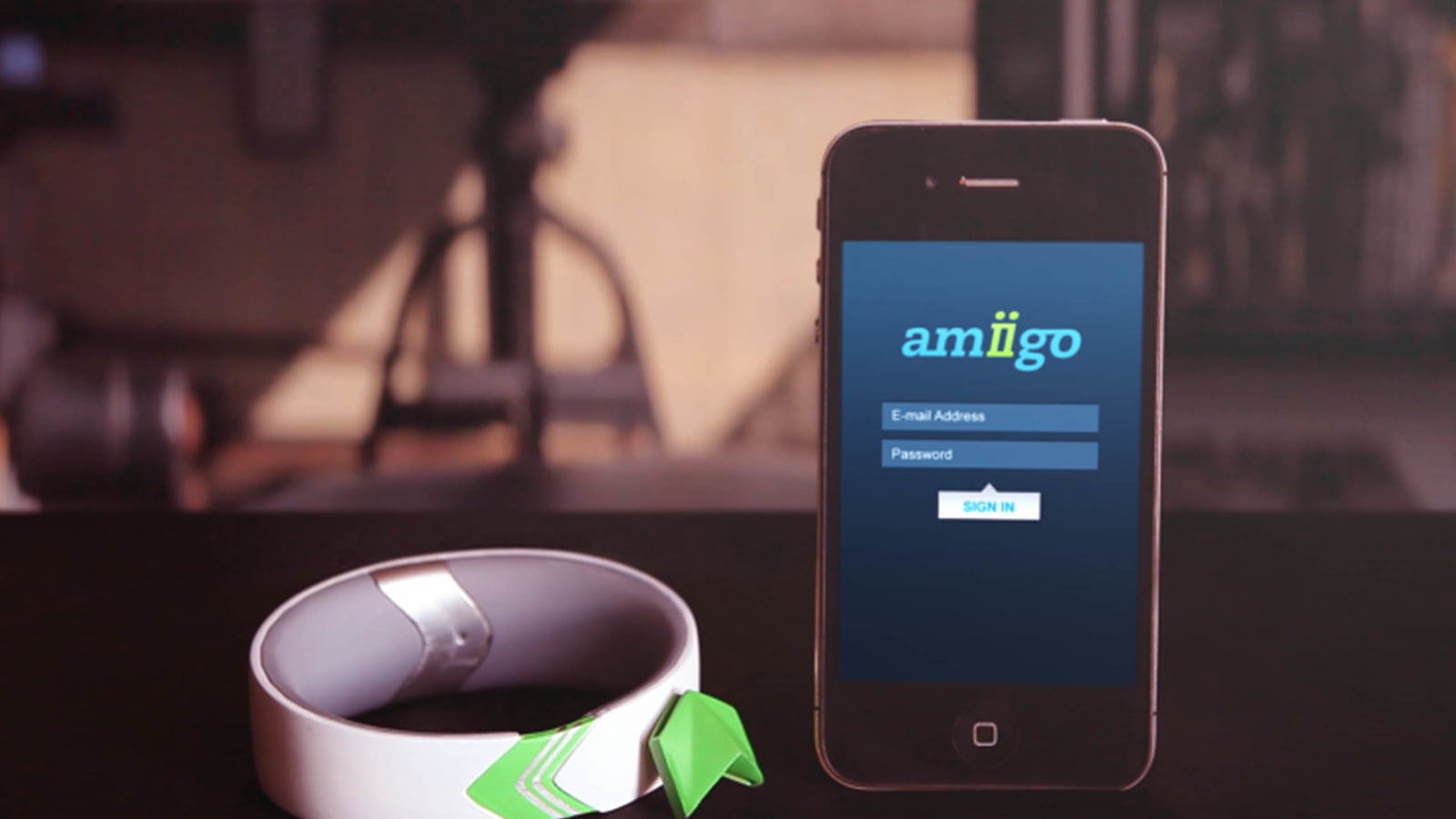I got my hands on an exclusive early test run of the Amiigo, a health gadget that automatically tracks gym exercises. Amiigo made headlines in the gadget world for crowdfunding $90,000, back in 2012 when raising that level of funding was mostly unheard of for a piece of untested hardware.
Two years later, Amiigo finds itself the first in a crowded market of next-generation health trackers that claim to automatically recognize all sorts of common fitness movements, from push ups to deadlifts.
None of Amiigo's competitors are out on the market and up until my initial test with the Amiigo, I'd never seen a commercial device that could recognize movements other than walking, running, or cycling.
The upshot is this: the technology works.
Here's a rundown of how the technology works, how the beta version could track my workout, and some implication for fitness enthusiasts over the next year,
How it works
Amiigo is a wrist and shoelace hardware combo, paired a smartphone app that crunches movement data in the cloud. Unlike the wrist-only Jawbone Up or Fitbit, the shoelace clip helps it recognize almost any movement. A pullup, for instance, moves the lower body more than the wrist, which is why it's necessary to have an additional piece of hardware on the the foot.
Since there's a near infinite number of possible exercises, Amiigo doesn't bother trying to categorize them ahead of time. Instead, users "train" the app to recognize the unique way they perform an exercise. For 30 seconds, a user performs a given exercise, names it, and then Amiigo is all set to recognize it during the actual workout.

For instance, in terms of raw movement data, this is why it looks like when I do a pull up, compared to co-founder of Amiigo Abe Cater (who was my workout partner for the trial). The waveform of my push ups are on top, Carter's is on bottom
Notice, even though we're both performing the same movement, the pattern looks very different.
Eventually Amiigo hopes to have enough data on users who perform all kids of exercises to automatically recognize them. It's leveraging its user base to make it more the algorithm more intelligent.
How it performed
While the alpha-version of the Amiigo only recognized about half of the movements in our workout, that was good news. I was skeptical it could do much of anything.
To test the device, I took it through a Crossfit-style workout of 2 minutes of cycling sprints, 10 deadlifts, 10 pull ups, 40 air squats and 15-25 push ups (2 rounds total).

After the workout, it displays all of the movements it recognizes and the number of reps (along with calories and total workout time).
When it doesn't recognize a pre-trained movement, it still recognize that some kind of multi-rep exercise was performed. After the workout, I can re-categorize "full body burst" as "deadlift."
I was pleasantly surprised with the number of exercises Amiigo could recognize, but it still has some much needed improvement ahead it.
The biggest challenge for the Amiigo before its 2015 launch is perfecting the training portion of the algorithm. It failed a few times to recognize deadlifts and pull ups. As of now, users have to perform about 10 reps pretty quickly for the Amiigo to see a pattern. That's hard to do. After the second round of 30 seconds of unassisted pull ups my arms were toast.
Eventually, Carter and I had to do pull ups on a scaffolded machine with 100 lbs of upward force just so I could get in enough reps.
The likely scenario is that Amiigo's early backers will end up with a unpolished version and they'll have train the software AI. After enough beta testers feed the database full of their own exercises, it may be smart enough at exercise pattern recognition.

Why it Matters
Whether Amiigo becomes the gold standard of fitness or one of it's upcoming competitors (the Atlas, Moov, or Push), automatic fitness detection is the future of working out.
The Amiigo wrist collects sleep quality, heart rate, and heart rate variability throughout the day and night, which gives it a rough measure of your stress levels, sleep quality, and total activity throughout the day. Is poor sleep killing your running goals? Did a stress day at work impair your bench press? Does sitting all day really counteract exercise? Amiigo will know.
Additionally, it will transform how gyms interact with customers. The fitness coaches at a globo-gym like Gold's would notice that a user was struggling with their squat or treadmill run. Instead of pressuring customers up front to buy private sessions, it can send one over while customers attempting a second round of squats.

Maybe their lack of progress is simple technique. Maybe nutrition. Amiigo feeds the data, but opens up a whole new opportunity for concierge gym services.
The Crossfit community is going to go bananas for this tech. Crossfit combines push ups, pull-ups, olympic lifting and other exercises in a quick circuit sprint. But, its nearly impossible to know whether one's pull ups are getting worse or better over time, since they are combined with a different set of exercises most days. Only the Amiigo, or an Amiigo-like product, could separate the signal from the noise.
For novice and fitness-enthusiasts alike, the Amiigo's intelligent pattern recognition alleviates a major headache at the gym. We all want to know if the effort we're putting in to exercise is matched by a stronger body. In the near future, we'll know.




